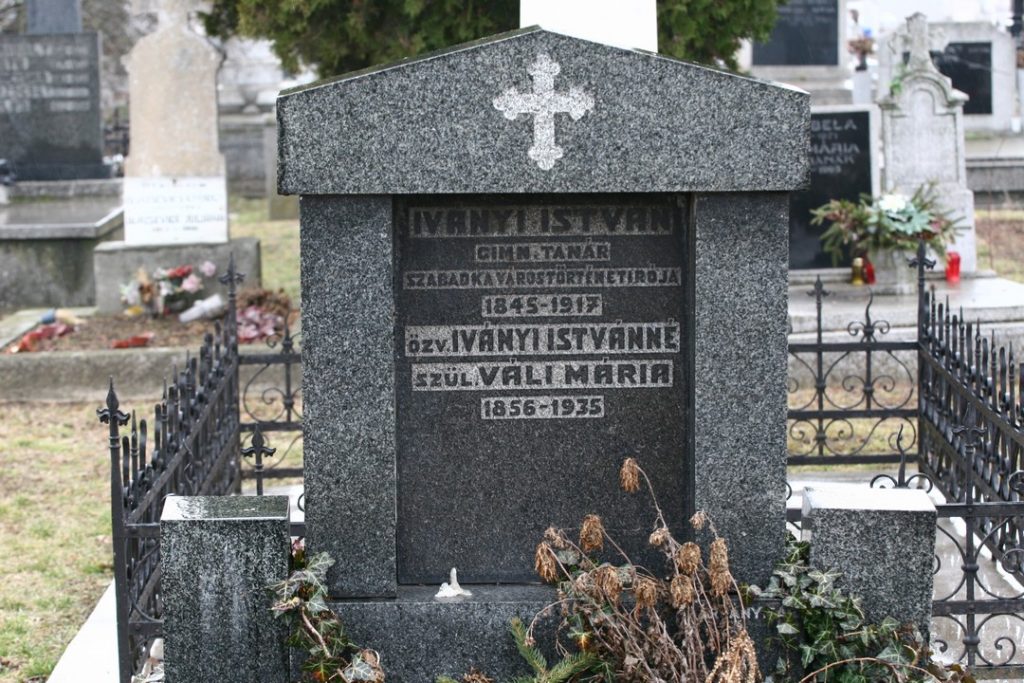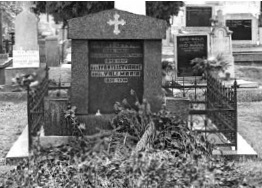Iványi István was born on December 17, 1845 in Lugoš (today’s Romania). His father was Istvan Ivanovsky (Ivanovsky István) a German-born remnant who moved to a small town on the shores of Moris from Arad. His mother was Carolina Liszt (Liszt Karolina).
He finished elementary school in German. He was a bad student, even repeated his class twice, while in 1857 he managed to enroll in the gymnasium. A well-off civilian Ivanovski family began to sink into the social rankings when the mother died in 1859. The father left the shop, and Istvan, who then attended secondary school in Timisoara, barely made ends meet. At the end of 1862, he had to go to the pianist in order to continue his education. It is located in the monastery in Vác, where, besides the German language, he learned well the Latin and Hungarian language. After the monastery in Vac, he was first transferred to Kecskemet, then to Szeged, where he graduated in 1866. He also started to work as a teacher for the first time. The following year he renounced his father’s name and took the name of Ivanja,which sounded more Hungarian and rhymed with the name of his best friend Aranju. He was transferred from Szeged to Nitra, on the territory of today’s Slovakia. He was consecrated to the Roman Catholic priest in 1869 in Vác. The next years is in Pest. He is teaching proficiency exams from Latin and German for more, and Greek for lower grades of grammar school. In the year of graduation, he was transferred to Szeged, and again to Nytry. He worked here in lower grades, so that he could move to Timisoara after two years. At the end of the school year, he was already waiting for the passport to the north of the Selmec mining settlement in the Carpathians. Ivanjia had a lot of constant bingering. When he learned that a class of the classical languages was vacated at the Subotica Gymnasium, in September 1875, without thinking, he applied for a vacancy.After receiving a positive response from the City Council on September 30, 1875, he stepped out of the piarist order and moved into the evangelical faith. Five months after coming to town, he married the daughter of city senator Bela Valia, Maria. Together they bought a house, and then how it is for a well-off civilian family to fit a vineyard. The Subotica Society accepted it, this is evident from the fact that it was accepted into the National Casino, which was open only to selected citizens and became the supervisor of the Evangelical Church. Ivanji tried to justify his trust. At the beginning of the eighties he had a gymnasium library and compiled a catalog of books. Thanks to him, the library was enriched with a large number of professional editions. In 1892 he published the annual library of the Subotica Library.He founded a numismatic collection and wrote a rule book for the literary section of the gymnasium.
The agitation for the founding of the City Library began in 1880. The project gets a more serious organizational form only five years later, in order to be realized in December 1894. Behind the project stood the city’s intelligence, but the lion’s share of work was done by Ivanji.
He played a major role in 1883 and founded the Association of Historians of Baccarat County. He was the vice-president and ideological leader of the association. A more serious visual problem was reported to him in 1891. His condition was rapidly deteriorating. He was retired in 1895, and a year later in his fiftieth year, he completely blinded himself.
On the occasion of the fortieth anniversary of scientific work in 1904, he published a bibliography of his works. 183 pieces found on the list. Later research revealed another seven, so the total number increased to 190. Of the nearly two hundred scientific papers, there are 50 in which he deals with pedagogical issues, among which there are several textbooks that have experienced multiple editions. After losing sight in 1898 with his former colleague Professor Bibo Bige György, he started a pedagogical paper entitled “The Student Informant” (Tanulók Közlönye), which was published every two weeks on twelve pages. Twenty numbers in the Budapest library “Secenji” have been preserved from the list.
Prior to settling in Subotica in 1875, Ivanji was engaged in a research of history. From the age of thirty, he wrote the history of his home town of Lugos and his surroundings, which covers the period between 1571 and 1658. Coming to Subotica, he continued his research. When the historical bibliography of the Bač – Canton County was compiled in 1881, its name appears on the list already the most times. His most important work is the historical monograph of Subotica (Szabadka története), which is guarding the period from prehistory to the end of the nineteenth century. The first volume, dealing with the political history of the city, came out of the press in 1886, and the second volume that deals with society, economy and culture six years later.
Ivanjija’s History of Subotica and today – today is the only comprehensive overview of the past of the city. There has still not been enough intellectual power in the city to continue, if anything, with the events of the twentieth century. In addition to writing the history of the city, he participated in the preparation of the monograph of the county and the one written by Đula Dudaš in 1896 on the order of the county and those initiated by the Hungarian Academy of Sciences under the editorial office of Samu Borovski, printed in 1909. In addition to the History of Subotica, the most important work is the Bács-bodrog vármegye földrajzi és történelmi helynévtára, which describes the brief history and geographical position of all the settlements in the city, which occur in historical sources. This monumental work has five volumes that were published between 1889 and 1907.
In 1915, with the help of his son Lajos, Ivanji wrote his memoirs. He died on July 7, 1917 in Subotica. He is buried at the Bay Cemetery.
The tombstone of Istvan Ivanjija is simple forms, flat cubes that resemble a Greek temple. It is made of dark gray granite and consists of a base with two laterally placed rectangular columns and a niche with engraved text. On the side there are two straight pillars, which carry tympanum at the top. At the center of Tympanon, a cross is crossed whose ends end with a troll. The tombstone was made by the workshop “Marvanjipar” from Subotica.

TOMB OF IVÁNYI ISTVÁN


0 comments on “TOMB OF IVÁNYI ISTVÁN”